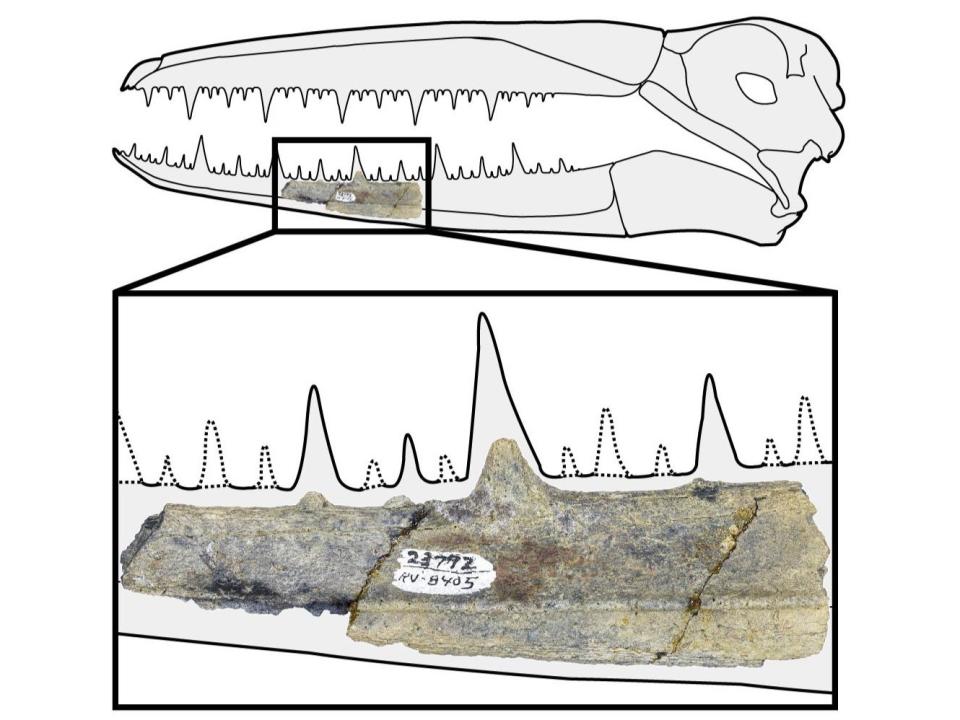Antarctica fossil is oldest known fragment from 'truly gigantic' group of ancient birds with 6m wingspan

A fossil discovered in Antarctica represents the oldest known example of a “truly gigantic” group of albatross-like birds which lived in the period following the dinosaurs’ extinction, according to a new scientific paper.
The fragment, dating back about 50 million years, belonged to a pelagornithid of a type that palaeontologists believe possessed a wingspan of up to 6m. An older fossil is known but it came from a much smaller animal, they said.
New analysis of the foot fossil discovered in the 1980s suggests that pelagornithids evolved giant bodies early in their reign over Earth’s southern oceans, according to experts from the University of California at Berkeley, the San Diego Natural History Museum and the Chinese Academy of Sciences in Beijing.
That dominance lasted over a “prolonged” period of millions of years, they added. Their paper is published in Scientific Reports.
The tarsometatarsus bone in question was originally found and catalogued on an expedition to Antarctica’s Seymour Island in 1986-87, UC Berkeley said in a news release. Graduate student Peter Kloess then came across it in the Museum of Palaeontology “while poking around the collections” in 2015, the university said.
Further study revealed the fossil to have been preserved in an older geological formation than previously thought, leading its estimated age to be revised from 40 million years to 50 million years old. It is also the largest specimen known to have come from a pelagornithid.
A second fossil dating back about 40 million years comes from the jaw of a pelagornithid. The fragment’s massive size suggests the creature’s skull may have been 2ft long, leading researchers to produce their eye-popping estimate of a bird double the size of a modern albatross. For comparison, the even larger pterosaurs – flying dinosaurs – had wingspans of up to 10m.
“Our fossil discovery, with its estimate of a 5m-to-6m wingspan – nearly 20 feet – shows that birds evolved to a truly gigantic size relatively quickly after the extinction of the dinosaurs and ruled over the oceans for millions of years,” said Mr Kloess.
He added: “I love going to collections and just finding treasures there. Somebody has called me a museum rat, and I take that as a badge of honor. I love scurrying around, finding things that people overlook.”
Pelagornithids were so-called “toothy” birds. Their jaws had bony protrusions covered in keratin that were not true teeth, but are thought to have allowed them to hunt by skimming squid and fish from near the water’s surface. Like albatrosses, they may have remained aloft for weeks at a time.
Taken together, the two fossil fragments points to a more varied picture of giant bird life in ancient Antarctica, the scientists said in their new analysis. In their paper, they wrote: “None of the specimens from Antarctica have been identified to genus, nor have any of them been used to establish new taxonomic names.
“However, there are likely at least two taxa (or species lineages) present through the Eocene of Seymour Island, and that only with the discovery and description of more overlapping skeletal elements may we begin to evaluate the alpha-level diversity of pelagornithids present in this ancient ecosystem.
“Nevertheless, these unnamed remains are a tantalising suggestion that the largest bird that ever flew may have soared its way over the Antarctic seas during an Eocene with a unique, and distinctively large-bodied, coastal avifauna.
“In addition, the distribution of pelagornithid body sizes in the same pelagic Antarctic ecosystem likely reflects ecological differences related to diet or foraging strategy, and indicates stability in those ecological niches through much of the Eocene.
“This updated fossil record of pelagornithids on Seymour Island reinforces the ideas that along with penguins and paleognaths, pelagornithids were a common and even a dominant avian clade throughout the Eocene of Antarctica, and potentially competed with other soaring birds for foraging and nesting spaces.”
Read more
Jurassic-era fossil of ‘Lazarus’ fish expected to fetch £50,000

 Yahoo News
Yahoo News 